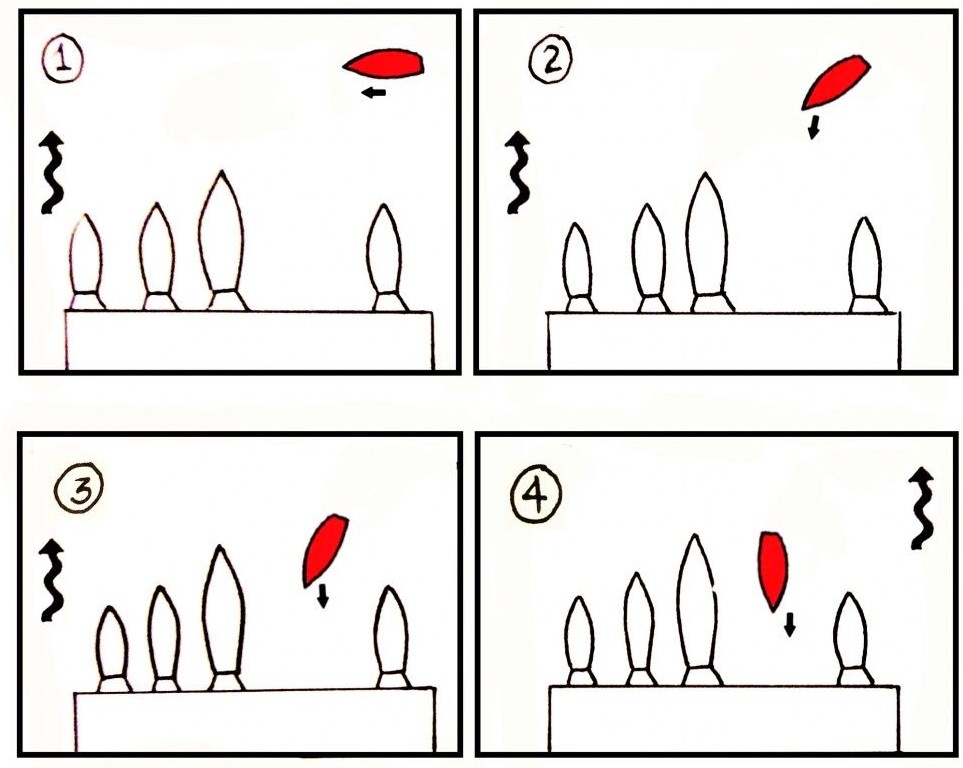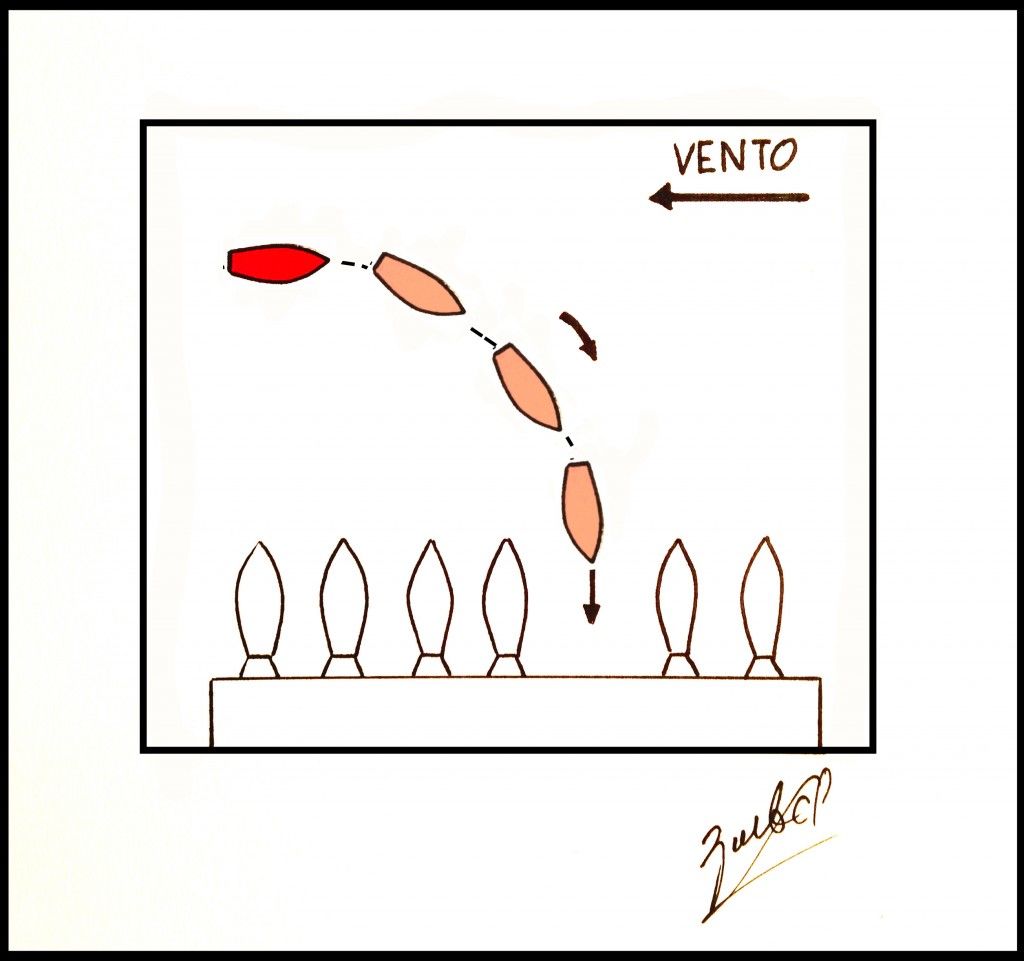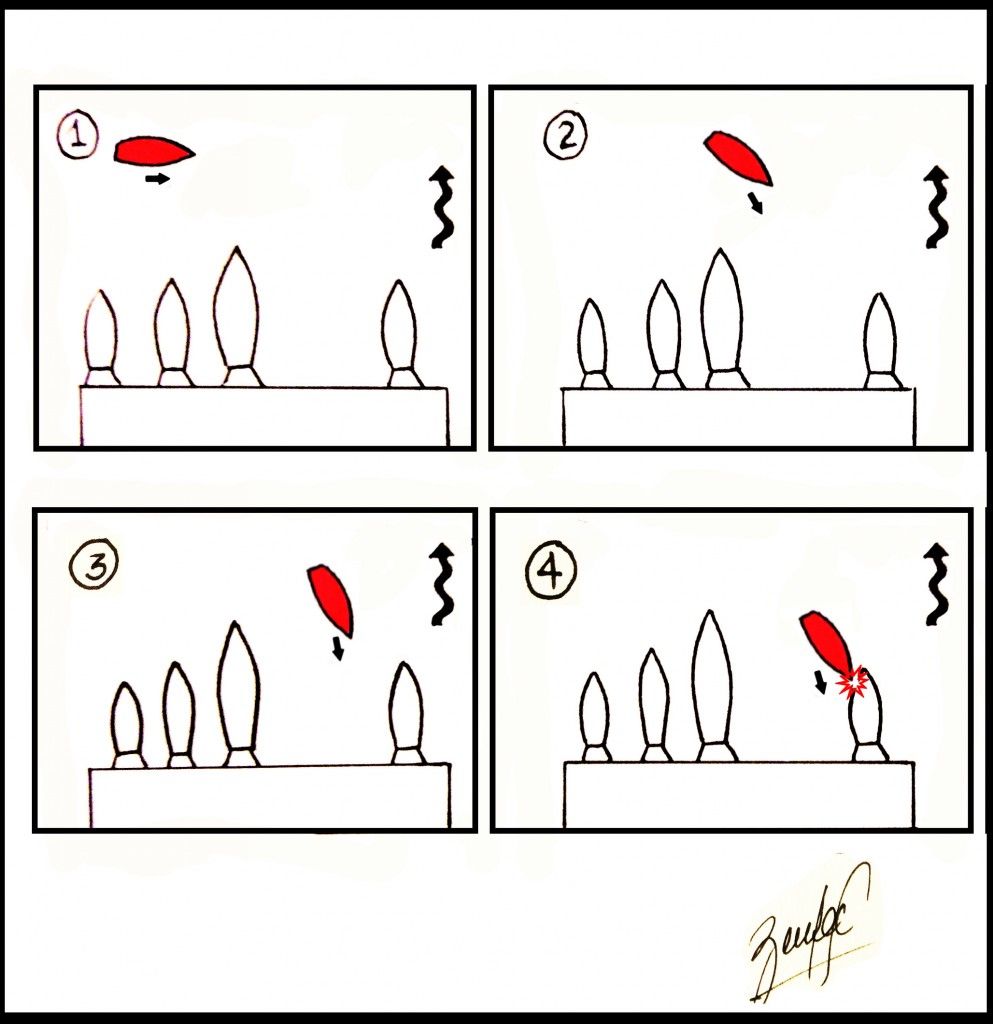Mooring by the bow is great, and it is for numerous reasons: easier maneuvering in strong winds, greater privacy, fewer risks of damaging the rudder blade or catching lines and traps with the propeller, which, more concisely, translates into an increase in safety for the most delicate area of the boat.
This operation, although easy, is not so elementary and you need to pay attention to the wind’s action, specifically in this case, on the bow. It’s important to keep in mind that while mooring forward certainly has many advantages, at the same time you expose yourself to the wind with the most vulnerable part in terms of maneuvering, the bow.
Let’s now analyze the situation where the wind blows strongly towards the dock where we need to moor.
From this perspective, the wind’s action is our potential ally. It will allow us to rotate the bow more easily and bring us closer to the dock; our speed will also be controlled with a few reverse thrusts if we get too close.
In this situation, the rule of staying as upwind as possible to have maximum maneuvering space still applies. At this point, the antagonist is the wind pressure on the side which can push us onto the bows of the downwind boats. Therefore, some quickness is needed.
Once in front of the center of the berth, we proceed slowly with the rotation to moor. Slowly because the
At the bow, we should have a person ready to pass a line ashore and then use the boat hook to grab the mooring line to come aft to secure the mooring buoy.
When alone and the wind is blowing from astern, a trick is to prepare a spring line tied at the bow and brought to the cockpit within reach of the helmsman. Once at the mooring and alongside,
In case the wind blows across the berth, there won’t be any problem approaching, but we should be careful during the final phase of entering the berth.
When we have the bow in front of the center of the berth, we’ll start to turn, positioning ourselves decidedly upwind, pointing the bow towards the boat on the left as shown in the drawing, to prevent the bow from falling off to starboard. Then, with the help of a good amount of engine power, we complete the approach to enter.
This way, we’ll have the wind pushing us to starboard. Finally, one person will have passed a line ashore from the bow and grabbed the mooring buoy, but in the cockpit, it’s advisable to have a second person, or the helmsman himself, who can hook the gunwale of the upwind boat with a boat hook or, better yet, pass a line to the cleat of the same boat to prevent our stern from falling off.
Bow mooring may not succeed. One particular situation where this possibility is high is when the wind blows very strongly from the dock and our bow, under pressure, doesn’t have the necessary thrust to complete the approach.
As depicted in the drawing above, we’ve chosen to move by entering the berth bow-first. The crosswind pushes us sideways, so we maintain a good speed to be able to control the direction. When we need to turn to starboard, we instinctively try to reduce speed, which is a mistake, because the bow can’t climb into the wind and tends to fall off while the boat moves forward with its momentum.
The dock is now close, and the desire to redo the maneuver from the beginning fades. And instead of letting the bow turn the necessary degrees to be free and giving engine power to move away, we try to complete the maneuver: we give engine power and turn the rudder to starboard to counteract the wind’s action on the bow and straighten the boat.
The collision is inevitable. Too much power, speed combined with lack of maneuverability always lead to the worst situation.






